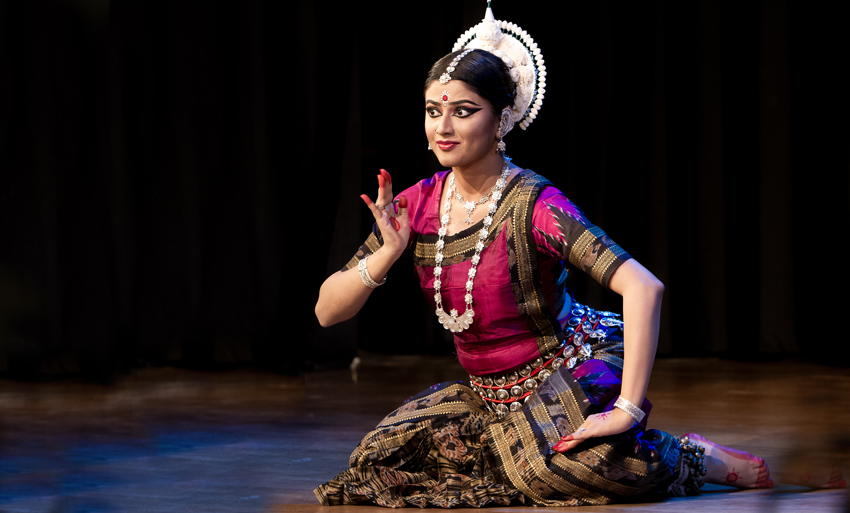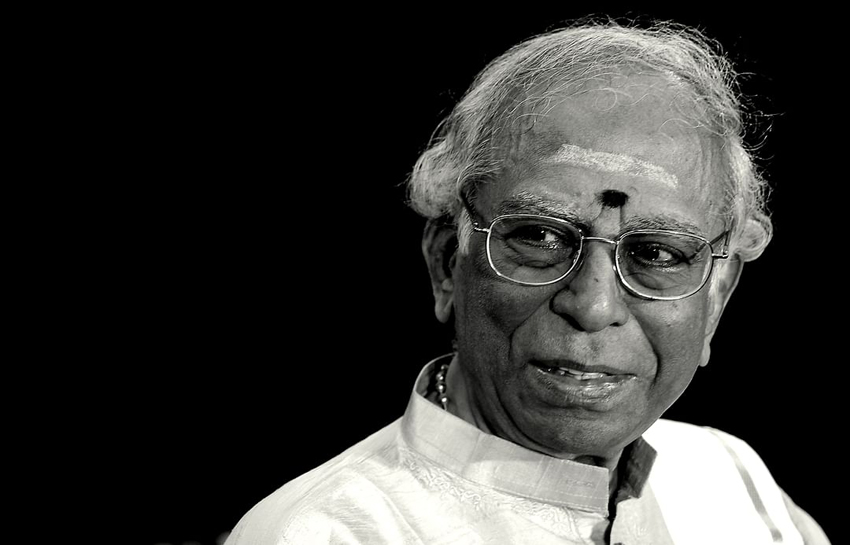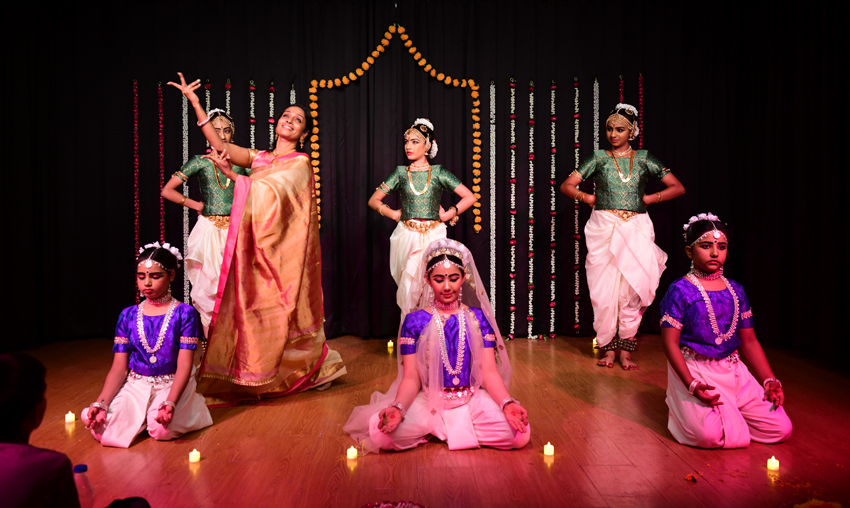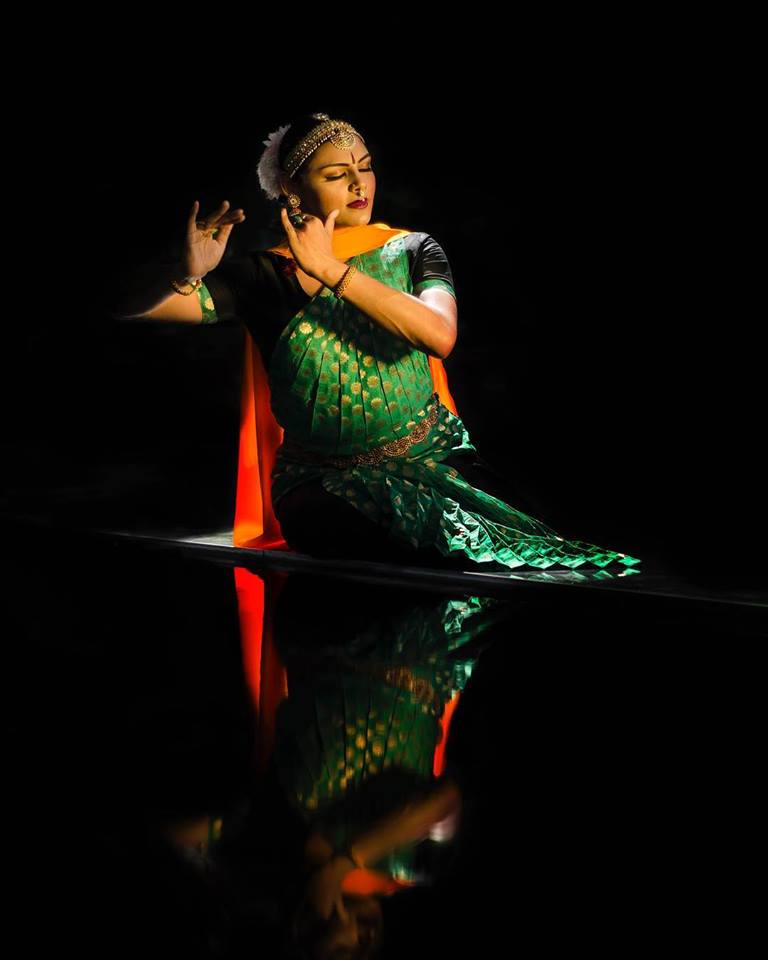The Raza Foundation presented at Alliance Francaise‘s M.L. Bhatia Auditorium during its 16th edition of Aramabh, a jugalbandi of Hindustani vocals and the Saxophone with Shubhra Talegaonkar and Priyank Krishna and Odissi recital by Arunima Ghosh. The Raza Foundation has been presenting a series of classical music and dance concerts to promote young talent. They sometimes repeat the performances at Triveni venue, giving one more opportunity to the musicians and dancers to present their art before different audiences.
Of late they have extended their series by presenting few artists at Raipur, Jharkhand and other areas where these artists are not seen. This is a welcome initiative. The Raza Foundation is doing splendid work, supporting the work which institutions like Sangeet Natak Akademi and other government agencies are doing. In a vast country like India, whatever The Raza Foundation is doing voluntarily is praiseworthy.

The jugalbandi between a vocalist and an instrument like Saxophone offered some novelty. One was not very sure how it will work out. But to our utter delight Priyank Krishna, played the Saxophone in sync with Shubhra’s vocal recital, note by note and evoked a pleasant mood.

Opening with Yaman raga in vilambit ek tala, going on to Madhya laya and in ati drut, both rendered the raga in its formal beauty. The composition, bandish ‘Man me basi muratiya tori aavo piya darasa dikhavo’ was full of desire, evoking the mood of expectancy and at times replete with taan, displayed virtuosity on part of Shubhra and competent handling on Saxophone by Priyank Krishna.
The concluding tarana had the usual fast space rendering offering both of the opportunity to skillfully winding up of the recital. Suraj Nirwan, the young artists accompanying on tabla played highlighting the moments of excitement and bringing the recital on a scintillating note and sam.
Odissi by Arunima Ghosh
Arunima Ghosh is a disciple of Kolkata based Monalisa Ghosh, a senior disciple of Guru Kelucharana Mohapatra. She is currently studying further under another senior disciple American dancer Sharon Lowen. Arunima has an attractive stage presence. The lithe tall figure helps her to strike sculpturesque poses, a salient feature of Odissi,
Guru Keluchana Mohapatra had choreographed Sanskrit poem ascribed t Kalidasa ‘Mankyaveena’ set to Malkuansa, Bageshri and Durga ragas. Appropriate to the moods of the Goddess described as playing upon a veena, studded with rubies, Matangi, as a daughter of Matang rishi, full of sensual beauty, ‘manjula vak vilasini’, singing softly, she plays with a parrot, ‘Lilashukapriye’, and also as a Durga displays her ferocious incarnation. The choreography by Guruji deals with the description that embellishes the dance. Arunima rendered the prayer competently. What was noteworthy was her quiet demeanour, minus any hurry and the musicians’ excellent accompaniment that enhanced the beauty of the dance.
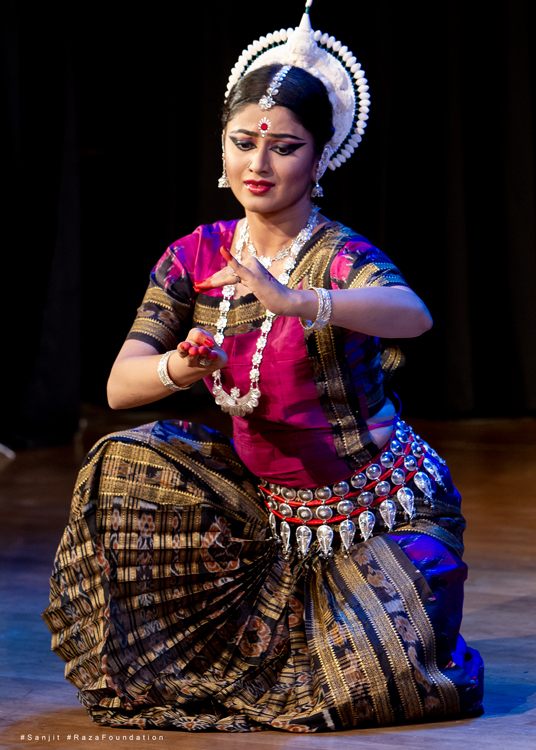
Ashtapadis are favourite items for Odissi dancers. Arunima chose the ashtapadi ‘Dhira samire, Yamuna tire’ describing Krishna’s waiting for Radha in the bower. The sakhi, the confidante tells Radha about the right time to go unto Krishna who is waiting for her. The gentle breeze blowing on the banks of Yamuna creates the right atmosphere for the union. The sakhi tells Radha to leave her ankle bells, which make noise and are ‘like enemy for a quiet meeting’, (ripumivakelisulolam), the belt she has put on also makes gentle sounds, as do the dancing earrings , hurry up and put on dark sari, (shilaya nilanicholam) as there is darkness in the Kunj. Krishna is looking for Radha in all directions. He has prepared a flower bed for her. Even when a leaf falls from a tree, he gets up looking for her.
The choreography by Kelubabu takes an exquisite imaginary flight. The leaf falls from a tree because, a bird flies and settled on the branch of a tree and a leaf falls on the floor, making gentle sound, listening to which Krishna gets startled and looks for Radha. Kelubabu has shown a bird, branch of a tree and gently falling of the leaf. Kelubabu is unparalleled in creating such visuals. Sakhi says: ‘Do not delay ‘O nitambini’, endowed with ‘heavy hips’, ‘anusara tam hridayesham’, follow your beloved, and the delicate walk enacted by sakhi telling Radha is shown like gajagamini, a walk like how when an elephant moves slowly. The Sanskrit imageries woven by Jayadeva are a delight for a choreographer to express those images in movement. Arunima with her lithe figure succeeded in creating these poetic images beautifully.
Pallavis composed by Guru Kelucharan Mohapatra and Bhubaneswar Mishra, the musician and violinist, as years pass on, acquire a quality of rare gems. The one in Sanakarabharanam is an evergreen one. Musically so reach with ukutas, the mnemonic syllables woven with solfas, the swaras are a web of sheer enchantment. The body of a dancer takes various curves, postures that resemble sculptures on walls of temples that abound in Bhubaneswar. They provide a choreographer with an opportunity to make those poses come alive. Arunima dexterously executed them, sometimes holding a pose of Darapani, nayika looking into a mirror, some time in a languid pose, ‘alasa kanya’ . At times the arms move like creepers when one raised and the other lowered. The nimble feet cross each other in the time cycle, the swastika pada, the body acquiring with ease tribhanga, the three-body bend, and when hastas, hand gestures are held moving from wrists in perfect sync with musical notes, the music courses through the entire frame of the dancer. Arunima’s frame moved smoothly and the rhythm, the time cycle and the concluding beat of the drum played visually Arunima approximated the nayika carved on a wall of the temple. As the music progressed and the pace quickened the dancer moved in step joyously. The singing, the violin, the cymbals and the mardala created harmony offering delightful relish.
[adrotate group=”9″]
Moksha, the final number by Arunima had simple movements, perfect chauka, moving from side to side, and taking, bhramari, pirouette, standing in front, then moving on heels backwards and taking a stance, which were a delight to watch. The serenity, the quiet expression, the internalized peace appropriate to Moksha, liberation, were reflected in Arunima’s execution. The prayer ‘Narayani Namostute’ leads to the ‘shanta rasa’ when the dancer after offering salutations, sits with two arms spread on either side in a yogic posture brings the recital to end with lights slowly fading out with complete silence. The choreography of Kelubabu has sat well on Arunima.
With more exposure and experience, Arunima will gain maturity. At present, her performance offers aesthetic delight. However, with passage of time and more practice the promise that she has shown as a competent dancer will help her scale artistic heights.
The accompaniment by Guru Prafulla Mangaraj on mardala, vocal by Sukant Nayak, violin by Gopinath Swain and manjira by Vishwanatha Mangaraj had the customary finesse for the Odissi recital.



